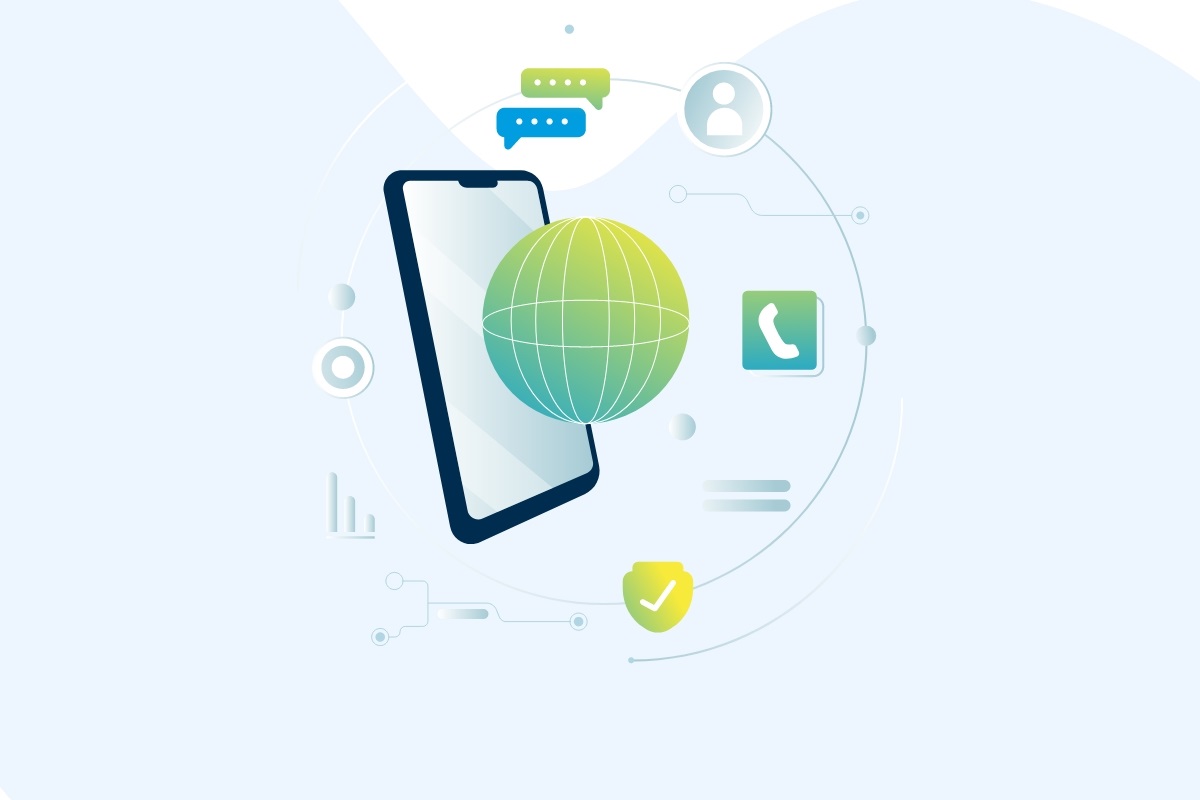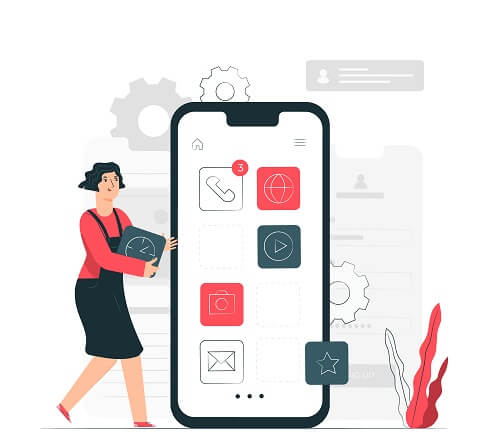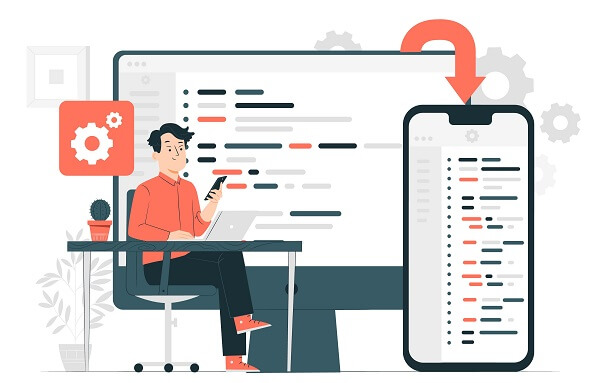
In the business world, the mobile app continues to gain prominence and has become a necessity for businesses looking to reach new heights. If you want to get a fully-functional, high-performing mobile app developed for your business, choosing the right technology stack is a critical decision, and you should make a wise choice. When it comes to mobile app development, the technology stack is considered by beginners as well.
Irrespective of the app development approach you will employ, you cannot expect the process to turn fruitful without incorporating a robust technology stack, including effective app performance optimization. A great product idea is only the first step to success in today’s competitive world. The right technology stack not only helps boost performance but also impacts the time to market and overall maintenance.
This article will dig deep into the mobile app technology stack and the different available options.
What is a Technology Stack and Why is it Important?
A technology stack is also called a solution stack and is referred to as a combination of frameworks, technology services, and languages that together form the ecosystem of a mobile app, web app, or website. The combination is a stack since one technology layer is placed on another. The technology stack is organized into two parts; the frontend (its appearance) and the backend (it’s working).
Now that you know what a technology stack is let’s discuss the technology stack for mobile app development in detail.
What Is Mobile App Development Tech Stack?

When it comes to developing a mobile app, the technology stack plays a significant role in building an app conveniently. The different kinds of tech stacks are available for different aspects. Know them below;
Frontend Development
The front end is the interface of your mobile app, and it refers to the face of your application that users see and interact with. Numerous tools and platforms are available in the market that helps develop the frontend, and the knowledge enables developers to perform certain specific tasks smoothly. When developing the front end of an app, developers need to bear in mind that the overall look of their app is enticing on all screen resolutions and sizes. The tools used for the frontend development include HTML, CSS, Javascript, etc.
Backend Development
Backend development is an essential aspect of the mobile app development process, and it assists in data storing, security, business logic, etc. The backend stores and keeps all important information about the mobile app which the end-users cannot see. In general, not all apps are required to have a backend, but more and more apps have a typical backend developed for added advantages. Some of the essential backend development tools include; web servers, languages, and frameworks, collaboration services, local database environment, etc.
Development Platform
A mobile app development platform, also known as a development platform, enables businesses to build, launch, and test their mobile app. Furthermore, it allows them to launch their mobile apps in quick turnaround times for smartphones and tablets. When choosing the best development platform for your mobile app, you need to make several decisions and incorporate one by deciding between cloud-based or on-premises services and low-code or codeless services, along with several other choices.
Additional Needs
This refers to all other additional technology elements that impact a mobile app’s security, robustness, and performance. After having knowledge of the technology stack and why it is important, it is now time to explore why we recommend hiring professional mobile app development companies and get a consultation from them regarding the right tech stack for your project.
Read our related post on Mobile Game Development Process
How To Choose The Right Technology Stack For Mobile App Development?
With overwhelming options available for tech stack in the market, choosing the right one for your project can be tough, and you should choose one that will drive your business towards success. Let us look at the few factors that will help you make the right choice.
App Needs and Goals
Every app is different, and so are its needs. Several factors vary from one app to another, for instance, the expected user experience, time to market, platform on which it would run, etc. These elements influence the choice of the tech stack that you will need for your project.
Furthermore, the main target you plan to achieve with your mobile app plays a crucial role in deciding its tech stack.
Skill Set Of In-House Development Team
Numerous frameworks and languages lead to the same results, but you should choose different factors to emerge with extraordinary results. That said, if you want to pick between two similar tech stacks available, go with the skills of your in-house developers. Choose a good tech stack for your project. The developers will be comfortable when working on it, and it will also result in speedy development besides maintaining high quality.
Data Safety & Security

Who doesn’t want their data to be safe and secure? Even a minor data leak may result in the broken trust of your users, and your brand’s reputation may get damaged as well. Hence, we recommend picking the best technology stack for your mobile app.
Compatibility With Current Technologies
The tech stack you choose should align with the current technologies for added advantages. Also, you should check the compatibility of the tech stack with the tools that you wish to incorporate in the later stages.
Timelines & Budget
Several functionalities come into play when you develop a mobile app. The type of project it is, its timeline, and the development cost are a few. Hence, you should consider all specific needs and keep the additional features aside. This way the development takes less time and also you can cut down on all unnecessary spendings.
Consider the above-stated factors to make sure your app turns out to be scalable and innovative for your business.
Also read our guide on how to Hire App Developers
Native App Technology Stack
The robustness and performance of native apps set them apart from the rest. A native app allows the developers to integrate all built-in functionalities of the device into their mobile app without any dependency on any third-party API.
Let’s know more about the tech stacks available to develop different types of apps for different platforms. Consult with your mobile app development company to know which one will be the best choice for you.
Technology Stack For Android Apps
If you are about to develop an app for the Android platform, choose to incorporate the below technologies in your stack.
Programming Languages
When it comes to picking a programming language for developing an application for an Android device, two programming languages are widely used. They are; Java and Kotlin. Kotlin is a less used and lightweight option as compared to Java. On the contrary, Java Microservices is a widely accepted programming language that makes Android app development easy.
Android Development Tools
There are two major android development tools: Android Developer Tools and Android Studio. The Android studio consists of tools for code editing, debugging, development of intuitive interfaces, and some fundamental ways to craft top-quality apps. The tool comes with drag and drops functionality for various features.
On the contrary, the Android Developer tools contain tools other than the debugging and coding essential tools. It offers specific coding and test automation support to the developers, a graphical builder, and several other features.
Software Development Kit (SDK)

Developers must download and install every SDK version for specific programs with some advanced features. The components that form the Android SDK are required to be downloaded separately.
Android has built-in Android UI software that allows developers to develop user-friendly interfaces of mobile apps. Jetpack is another latest UI kit that helps develop a native Android UI, which helps ease and speed up the UI development of Android apps.
Also, read the blog on Top Mobile App Development Trends to Watch in 2024 & Beyond
Technology Stack For iOS Apps
Let’s see how to choose the right technology stack for mobile app development for iOS.
Programming Languages
When it comes to developing an iOS app, two majorly used programming languages are available. Objective-C and Swift. Objective-C is a widely supported programming language by Apple. Though the language is a bit complex, developers prefer using Swift over it.
Swift, on the contrary, is a comparatively new language, and it doesn’t have any string identifiers that lead to a few mistakes. The language is easy to understand, debug and edit since it requires less usage of codes.
iOS Development Tools
A few widely used toolsets for the development of iOS apps are App code and Xcode. XCode offers the developers access to all necessary features required to build a native app for the iOS platform.
App code is an integrated development environment that a third party powers. It also holds a flexible setting system that enables optimum productivity.
UI Frameworks
When developing user interfaces for iOS apps, developers commonly use two frameworks; SwiftUI and UIKit. The UIKit is a basic framework that is used for developing and managing graphical components in iOS apps.
SwiftUI is more or less similar to UIKit, but it was introduced later. Hence, it only supports advanced iOS versions.
Technology Stack For Cross-Platform Apps
If you want to target users using both iOS and Android apps, then the development of cross-platform applications is what you need. This app development enables developers to use a single set of code for both iOS and Android operating systems. Let’s see a few common technology stacks.
Flutter
Flutter is a free and open-source cross-platform framework launched and maintained by Google. At the same time, Flutter is one of the newest entrants and enables faster time to market. Developers are considering Flutter for app development. Furthermore, it has the ability of hot reloading for viewing rapidly the changes done on simulators, hardware, and emulators. The tech stack is based on Dart programming language hence the developers should know Dart to use it.
React Native
It is a Type-based script or Javascript framework it helps develop mobile apps. It employs the same UI building blocks in iOS and Android and provides quick and straightforward error detection. Additionally, it helps develop a simple interface and high functionalities.
Xamarin
Generally accomplished with the help of the C# language, the Xamarin framework offers direct access to the native APIs of both iOS and Android apps. It also enables the usage of a complete and open-source toolkit. Like other frameworks, Xamarin has some restricted functionalities and pay-to-use features.
Wrapping Up
The best option is not just to follow the latest trends and work with some in-trend programs. The mobile app technology stack plays a significant role in the app development processes and helps develop a robust product. That said, before developing a mobile app, you should deeply research your market and predict all upcoming tendencies. This will help you emerge with a program that enables the development of a more engaging application that offers long-lasting success.
Frequently Asked Questions
Social Hashtags
#mobileapp #technologystack #mobileapptechnologystack #mobileapptechstack #mobileappdevelopment #backenddevelopment #frontenddevelopment #flutter #reactnative #xamarin #mobileappdevelopmentcompany
Guide to Choose The Right Technology Stack for Mobile App Development: INFOGRAPHIC





